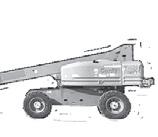IN The GardeN
B y V ictoria S mith
“Welcome home.” That’s what the border guard said to us in the fall of 2020, the very first time we crossed the U.S. border into Point Roberts.
We had driven 19 hours from southern California to take possession of the cottage we had purchased sight unseen. We were running away from California’s congested freeways and polluted air, water rationing, power outages and wildfires, and the many changes brought on by the Covid pandemic. We had lived our entire lives in California, and wanted to get away from it all, including Bakersfield’s triple-digit desert heat.

up in. Our first summer there, we took buckets filled with ripe tomatoes to work each day, and begged people to take our extra zucchini.
A job transfer required a move to Bakersfield, and we stayed for 33 years. Our backyard garden grew along with our children. When they outgrew the swing set, we replaced the lawn with raised beds, doubling our growing space.
Learning to garden in the cool, wet Pacific Northwest has been quite a journey. Like many newcomers, I had no idea what I could and couldn’t grow here. The weather was different, the soil was different, and there was an actual forest across the road from my house, blocking the sunshine my garden craved. There was also a plethora of new-to-me critters to deal with: Foraging deer, hungry raccoons, giant slugs, and unseen animals and birds that moaned, howled and screeched in the night.
deners and environmental caretakers. In less than four years, I’ve gotten a pretty good handle on gardening here. In addition to teaching classes as a WSU Master Gardener, I co-moderate the Garden Buddies group at the Earthwise gardens at Southlands in Tsawwassen. I’m ready and eager to talk about gardening, answer questions and offer resources if you need them. You’ll find me in the garden.
Welcome home!
I grew up in the San Francisco Bay Area, working in my grandmother’s garden. We grew nostalgic grannie flowers in wide beds around a decades-old victory garden. My friends and I were free range kids, exploring empty lots, catching polliwogs and bumblebees in glass jars, and playing in a hand-dug bomb shelter in the backyard of our Japanese neighbors. Everyone we knew had a garden.
I honed my teenage gardening skills in the hippie-dippie 1960s and ’70s, part of the back-to-nature organic gardening generation. When I wasn’t in the garden or at school, you could find me at Grateful Dead concerts in Golden Gate Park, hiking in the East Bay hills, or hanging out on the beach in Santa Cruz. I volunteered at community gardens and soup kitchens and marched with Cesar Chavez for farm worker rights.
My final years of college took me to Los Angeles, with a variety of gardens big and small. Flowers along a parking strip, a pot of herbs next to the kitchen window, container gardens on patios and driveways. As newlyweds, my husband and I created a sprawling garden of vegetables and fruit trees behind the house he grew


During our final 10 years in Bakersfield, we converted our water-guzzling front lawn into a thriving 1,600-square-foot cottage garden surrounded by a white picket fence like the one my grandmother had. We planted drought-friendly flowers and herbs alongside sun loving veggies and fruit trees. It was a literal oasis in the desert, a fully functional habitat providing food and shelter for people, pollinators and wildlife.
Our cottage garden offered opportunities to talk with neighbors and others about conservation and regenerative gardening. People on foot, on bikes and in cars stopped to say how much they enjoyed our front yard. They shared their own experiences and asked for gardening advice. They brought their children to see the notso-secret garden, and they often left with baby plants, cuttings, and fresh herbs and veggies. Friends I met in online gardening groups came by for informal tours, and I learned more about permaculture and regenerative gardening. I was in my happy place, surrounded by people who shared my interests.
My gardens in California and Point Roberts kept me happy, healthy, connected, and busy during Covid and beyond. We became full time Pacific Northwest residents in June 2021, and I became a Washington State University (WSU) Whatcom County Master Gardener in 2022.
The border was closed for a year and a half, severely limiting access to gardening supplies. There were – and still are – prohibitions on bringing live plants across the border. So many challenges for a newcomer and so much to learn. Even so, I was warmly greeted and quickly became part of an established community of fellow gar-
Garden chores – Keep planting, it’s not too late – Pull weeds and add mulch
– Plant beans and sunflowers
– Provide water for birds and bees
– Take a walk and check out other people’s gardens





